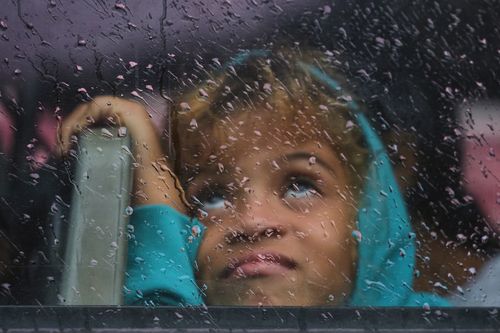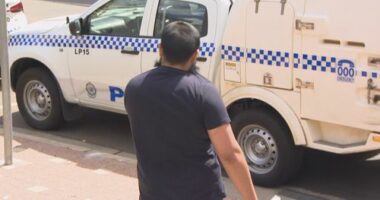Share this @internewscast.com
Jamaica faced a devastating impact as Hurricane Melissa made landfall on Tuesday, bringing with it intense winds reaching speeds of 295 km/h. Tragically, the storm claimed at least one life on the island.
In a heart-wrenching incident, a tree toppled onto a baby in the island’s western region, as reported by Abka Fitz-Henley, a state minister, during an interview with Nationwide News Network. According to Fitz-Henley, the worst of the storm’s destruction was witnessed in the southwestern and northwestern parts of Jamaica.

By Wednesday morning, Melissa’s powerful winds were clocked at 165 km/h, and the storm was advancing north-northeast at 22 km/h, as per updates from the hurricane center.
The hurricane’s center was positioned 72 kilometers northwest of Guantánamo, Cuba, and approximately 330 kilometers south of the central Bahamas.
In anticipation of the storm’s fury, Cuban authorities evacuated hundreds of thousands to shelters on Wednesday. A hurricane warning had been issued for the provinces of Granma, Santiago de Cuba, Guantánamo, Holguin, and Las Tunas, as well as for parts of the southeastern and central Bahamas.
Manuel Pérez, a 73-year-old retiree residing in Las Tunas, recounted to The Associated Press via phone that assessing the full extent of the damage was challenging, as the hurricane struck during the night, leaving the streets eerily empty.
“The winds and gusts were very strong, and the rain is still coming,” he said.
The agency warned that preparations for the storm in the Bahamas “should be rushed to fulfilment”.

Melissa struck Jamaica on Tuesday with top sustained winds of 295km/h before weakening over land.
It was forecast to continue weakening as it crossed Cuba and remain a strong hurricane as it moves across the southeastern or central Bahamas later on Wednesday (early Thursday AEDT).
The storm is expected to make its way late on Thursday (Friday AEDT) near or to the west of Bermuda, where a hurricane watch is in effect.
The storm was expected to generate a storm surge of up to 3.6 metres in the region and drop up to 51 centimetres of rain in parts of eastern Cuba.

The intense rain could cause life-threatening flooding with numerous landslides, US forecasters said.
The hurricane could worsen Cuba’s severe economic crisis, which already has led to prolonged power blackouts, as well as fuel and food shortages.
“There will be a lot of work to do. We know there will be a lot of damage,” Cuban President Miguel DÃaz-Canel said in a televised address, adding that “no one is left behind and no resources are spared to protect the lives of the population.”
He urged the population not to underestimate the power of Melissa, “the strongest ever to hit national territory”.

Jamaica rushes to assess the damage
Jamaican officials reported complications in assessing the damage, while the National Hurricane Centre said the local government had lifted the tropical storm warning there.
“There’s a total communication blackout on that side,” Richard Thompson, acting director general of Jamaica’s Office of Disaster Preparedness and Emergency Management, told the Nationwide News Network.
More than half a million customers were without power late Tuesday as officials reported that most of the island had downed trees, power lines and extensive flooding.
Extensive damage was reported in parts of Clarendon in the south and in the south-western parish of St Elizabeth, which was “under water”, said Desmond McKenzie, deputy chairman of Jamaica’s Disaster Risk Management Council.
The storm damaged four hospitals and left one without power, forcing officials to evacuate 75 patients.
The government said it hopes to reopen all of Jamaica’s airports as early as Thursday to ensure quick distribution of emergency relief supplies.
The storm already was blamed for seven deaths in the Caribbean, including three in Jamaica, three in Haiti and one in the Dominican Republic, where another person remains missing.












